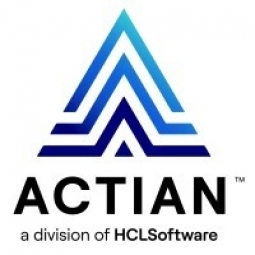Customer Company Size
Large Corporate
Region
- Europe
Product
- Actian Analytics Platform
- Actian Vector Analytics Database
- Actian Action Apps
Tech Stack
- Analytics
- Database Management
- Mobile App Development
Implementation Scale
- Enterprise-wide Deployment
Impact Metrics
- Productivity Improvements
- Customer Satisfaction
Technology Category
- Analytics & Modeling - Real Time Analytics
- Application Infrastructure & Middleware - Data Exchange & Integration
Applicable Functions
- Logistics & Transportation
Use Cases
- Supply Chain Visibility
- Fleet Management
- Inventory Management
Services
- Data Science Services
- System Integration
About The Customer
TimoCom is Europe’s leading provider of freight and vehicle exchange services. The company revolutionized Europe’s transport sector by creating an electronic marketplace for freight and vehicle exchange. It’s a fast-paced business complicated by the varied operational and regulatory requirements and languages of different countries. Today, TimoCom is a €42 million company managing 450,000 daily cargo space and freight offers from more than 100,000 users.
The Challenge
TimoCom, Europe’s leading provider of freight and vehicle exchange services, was faced with the challenge of managing 450,000 freight offers per day and 30,000 warehouse/logistics options with efficiency and security. The business was complicated by the varied operational and regulatory requirements and languages of different countries. Company leaders recognized early on that sustained business growth would require improved performance and deeper insights into its international operations. In the transport and freight forwarding industry, orders tend to be large and represent a large investment on the part of the customer. Criminal organizations sometimes monitor and prey upon transport networks, attempting to steal valuable freight in transit.
The Solution
TimoCom chose the Actian Analytics Platform™ and the Actian Vector Analytics Database based on the advantages of a massively parallel processing architecture with columnar structure, adaptive compression, compiled queries, high-speed interconnectivity and in-memory analytics. By integrating the Actian solution with its TC Truck & Cargo and TC eBid applications, TimoCom can track and report on transport and warehousing contracts, and optimize vehicle fleet and warehouse capacity and utilization, accelerating time-to-insight across the transport chain. With Actian Vector, TimoCom can quickly detect and analyze suspicious or irregular activities at any point in the transport chain, helping to ensure a more secure and reliable experience for customers. TimoCom is also extending its use of the Actian Analytics Platform as an enterprise-wide solution. Actian Action Apps™ provide an ideal solution to develop custom mobile apps that empower TimoCom staff with valuable insights into their transport services, anytime and anywhere.
Operational Impact
Quantitative Benefit

Case Study missing?
Start adding your own!
Register with your work email and create a new case study profile for your business.
Related Case Studies.

Case Study
Remote Temperature Monitoring of Perishable Goods Saves Money
RMONI was facing temperature monitoring challenges in a cold chain business. A cold chain must be established and maintained to ensure goods have been properly refrigerated during every step of the process, making temperature monitoring a critical business function. Manual registration practice can be very costly, labor intensive and prone to mistakes.

Case Study
Hospital Inventory Management
The hospital supply chain team is responsible for ensuring that the right medical supplies are readily available to clinicians when and where needed, and to do so in the most efficient manner possible. However, many of the systems and processes in use at the cancer center for supply chain management were not best suited to support these goals. Barcoding technology, a commonly used method for inventory management of medical supplies, is labor intensive, time consuming, does not provide real-time visibility into inventory levels and can be prone to error. Consequently, the lack of accurate and real-time visibility into inventory levels across multiple supply rooms in multiple hospital facilities creates additional inefficiency in the system causing over-ordering, hoarding, and wasted supplies. Other sources of waste and cost were also identified as candidates for improvement. Existing systems and processes did not provide adequate security for high-cost inventory within the hospital, which was another driver of cost. A lack of visibility into expiration dates for supplies resulted in supplies being wasted due to past expiry dates. Storage of supplies was also a key consideration given the location of the cancer center’s facilities in a dense urban setting, where space is always at a premium. In order to address the challenges outlined above, the hospital sought a solution that would provide real-time inventory information with high levels of accuracy, reduce the level of manual effort required and enable data driven decision making to ensure that the right supplies were readily available to clinicians in the right location at the right time.

Case Study
IoT-based Fleet Intelligence Innovation
Speed to market is precious for DRVR, a rapidly growing start-up company. With a business model dependent on reliable mobile data, managers were spending their lives trying to negotiate data roaming deals with mobile network operators in different countries. And, even then, service quality was a constant concern.

Case Study
Vehicle Fleet Analytics
Organizations frequently implement a maintenance strategy for their fleets of vehicles using a combination of time and usage based maintenance schedules. While effective as a whole, time and usage based schedules do not take into account driving patterns, environmental factors, and sensors currently deployed within the vehicle measuring crank voltage, ignition voltage, and acceleration, all of which have a significant influence on the overall health of the vehicle.In a typical fleet, a large percentage of road calls are related to electrical failure, with battery failure being a common cause. Battery failures result in unmet service agreement levels and costly re-adjustment of scheduled to provide replacement vehicles. To reduce the impact of unplanned maintenance, the transportation logistics company was interested in a trial of C3 Vehicle Fleet Analytics.





